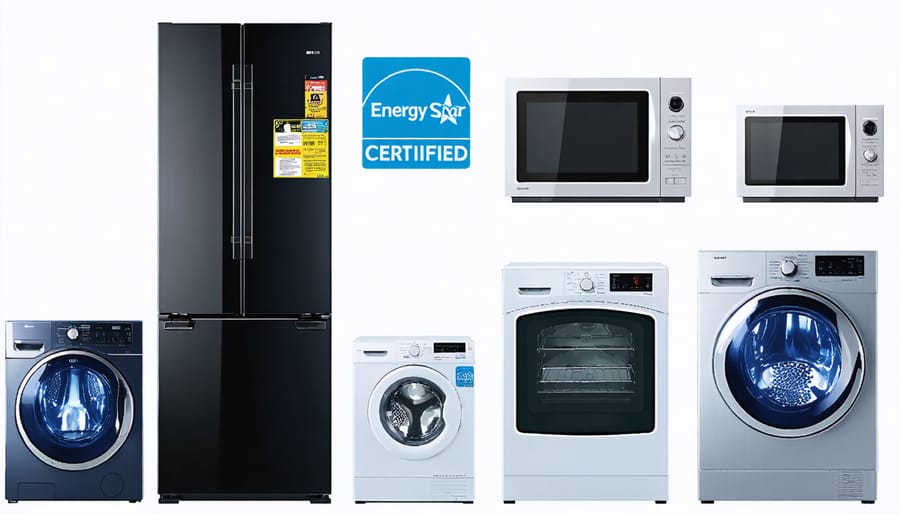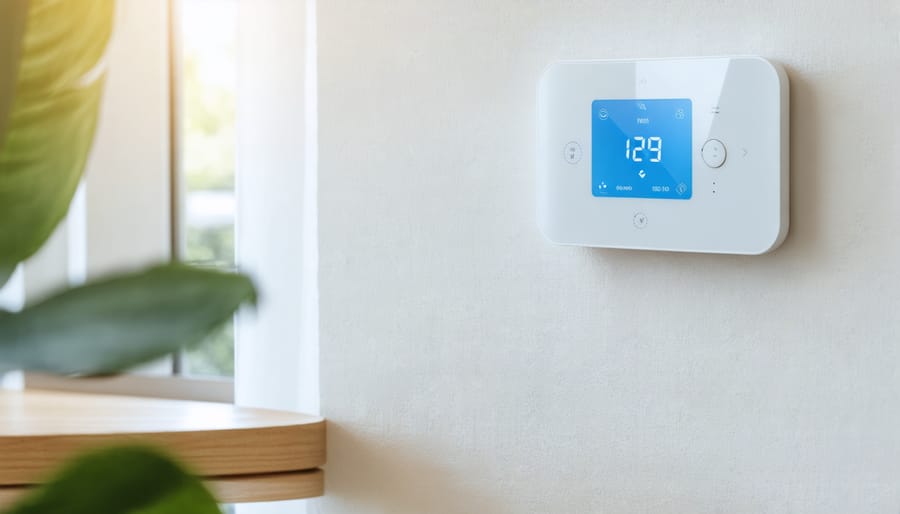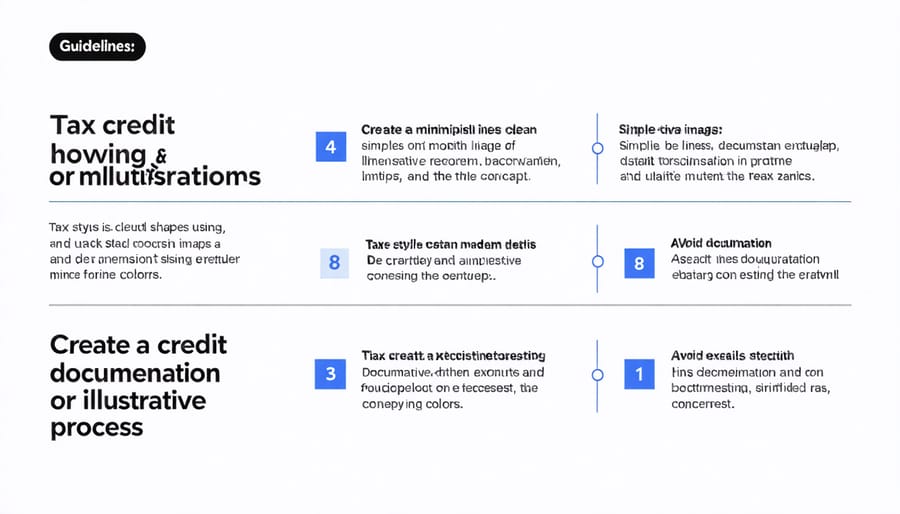Slash your energy costs and secure significant tax savings in 2024 with federal credits of up to $500 for qualifying energy-efficient appliances. These incentives, part of the Inflation Reduction Act, make it the perfect time to upgrade your home’s aging equipment and cut your power bills for years to come. From ENERGY STAR certified refrigerators and washing machines to high-efficiency water heaters and HVAC systems, homeowners can now combine immediate energy savings with valuable tax benefits. Whether you’re planning a single appliance upgrade or a complete home efficiency overhaul, understanding these tax credits can help you maximize your investment while contributing to a more sustainable future. Learn exactly which appliances qualify, how to claim your credits, and smart strategies to stack these savings with local utility rebates and manufacturer incentives.
Understanding Energy-Efficient Appliance Tax Credits
Available Tax Credit Amounts
The 2023 Energy Efficient Home Improvement Credit offers generous incentives for various appliance upgrades. For heat pumps and heat pump water heaters, you can claim up to $2,000 annually. Energy-efficient central air conditioning systems qualify for up to $600, while water heaters powered by natural gas, propane, or oil are eligible for up to $600 in credits.
Smart thermostats and advanced temperature control systems can earn you up to $150 in tax credits. For home envelope improvements, you can claim up to $1,200 annually for upgrades like energy-efficient windows ($600 limit), doors ($250 limit per door, $500 total), and insulation materials ($1,200).
These credits are particularly valuable because they directly reduce your tax bill dollar-for-dollar, unlike deductions that only reduce your taxable income. Remember, you can claim multiple credits in the same year, up to the category limits. The best part? These credits are available through 2032, giving you plenty of time to plan your energy-efficient upgrades strategically.
Pro tip: Combine these federal tax credits with state incentives and utility rebates for maximum savings on your appliance upgrades!

Qualifying Energy Star Requirements
To qualify for the energy-efficient appliance tax credit, your new appliances must meet specific Energy Star requirements. These standards go beyond basic energy efficiency – they represent the highest level of performance and energy savings in their category.
For most appliances, look for the distinctive blue Energy Star label, which indicates the product meets or exceeds the program’s strict efficiency guidelines. Energy Star certified appliances typically use 10-50% less energy than standard models, depending on the category.
Key certification requirements include:
– Refrigerators must be at least 15% more efficient than federal minimum standards
– Washing machines need to use 25% less energy and 33% less water than standard models
– Dishwashers should use less than 270 kWh/year and 3.5 gallons per cycle
– Heat pumps must meet specific Seasonal Energy Efficiency Ratio (SEER) ratings
Remember that Energy Star requirements are updated periodically, so it’s essential to check the current specifications when shopping. The Department of Energy’s website maintains an up-to-date list of qualifying models, making it easier to identify eligible appliances before making your purchase.
Pro tip: Some retailers display Energy Star certification information right on their price tags or product descriptions, helping you quickly identify qualifying models while shopping.
Top Tax Credit-Eligible Appliances Worth Your Investment
Smart Thermostats and HVAC Systems
Looking to upgrade your home’s climate control system? Smart thermostats and energy-efficient HVAC systems not only make your home more comfortable but can also qualify for substantial tax credits. As part of the growing trend in smart home technology, these innovations can lead to impressive energy savings while putting money back in your pocket.
Currently, homeowners can claim up to $600 in tax credits for qualifying central air conditioning systems and up to $2,000 for heat pumps that meet Energy Star requirements. Smart thermostats that earn the Energy Star certification may qualify for additional local utility rebates, though they’re not eligible for federal tax credits on their own.
To qualify, your HVAC system must meet specific energy efficiency ratings:
– Split systems: SEER2 rating of 16 or higher
– Package systems: SEER2 rating of 15.2 or higher
– Heat pumps: HSPF2 rating of 7.5 or higher
Remember to keep all documentation, including the manufacturer’s certification statement and proof of purchase. The installation must be completed by a qualified professional, and the system should be primarily used in your principal residence.
Pro tip: While the upfront cost might seem steep, combining tax credits with annual energy savings (typically 10-30% on heating and cooling costs) can help offset the initial investment within just a few years.

Water Heaters and Heat Pumps
Looking to upgrade your water heating system? You’re in luck! The energy-efficient appliance tax credit offers substantial savings on both traditional water heaters and heat pump water heaters, making it easier to choose eco-friendly options for your home.
Heat pump water heaters are the stars of this category, offering up to $2,000 in tax credits. These innovative systems use electricity to move heat rather than generate it directly, making them up to three times more energy efficient than conventional water heaters. To qualify, your heat pump water heater must meet the UEF (Uniform Energy Factor) requirements set by the Department of Energy.
Traditional water heaters haven’t been left out either. Gas, oil, and electric water heaters that meet specific energy efficiency standards can qualify for credits up to $600. To be eligible, look for models with the ENERGY STAR certification and check their UEF rating against the current year’s requirements.
Pro tip: While heat pump water heaters have a higher upfront cost, combining the tax credit with their superior energy efficiency often leads to better long-term savings. Consider your home’s layout and climate when choosing between options – heat pump water heaters work best in warmer spaces with good air circulation.
Remember to keep your receipts and manufacturer certification statements when filing for these credits. These documents are essential for claiming your tax benefits come tax season.
Kitchen and Laundry Appliances
When it comes to kitchen and laundry appliances, the tax credit program offers substantial incentives for upgrading to energy-efficient models. Qualifying refrigerators must meet ENERGY STAR’s most stringent certification requirements, typically consuming 15-20% less energy than standard models. Our analysis of energy savings data shows these upgrades can lead to significant reductions in your monthly utility bills.
For laundry appliances, eligible washing machines must feature high-efficiency water usage and advanced spin cycles that remove more water, reducing drying time. Look for washers with a Combined Energy Factor (CEF) of 2.92 or higher and dryers with a CEF of 3.80 or greater for electric models.
The tax credit covers up to 30% of the purchase price, with a maximum credit of $300 for refrigerators and $150 each for washers and dryers. To qualify, these appliances must be installed in your primary residence and purchased new – refurbished units aren’t eligible.
Keep your receipts and product documentation showing the ENERGY STAR certification and efficiency ratings. You’ll need these when filing your taxes, along with Form 5695, to claim your credit. Remember to verify the specific model numbers against the qualifying products list before making your purchase.
How to Claim Your Tax Credits

Required Documentation
To claim your energy-efficient appliance tax credit, you’ll need to gather and maintain several key documents. Keep your original receipt or sales invoice showing the purchase date, price, and model number of your appliance. Make sure the manufacturer’s certification statement is available, which confirms the appliance meets energy efficiency requirements.
You’ll also need to complete IRS Form 5695 (Residential Energy Credits) when filing your taxes. For your records, take photos or make copies of the Energy Star label and any related energy efficiency ratings. If you had professional installation, keep those receipts as well, especially for items like water heaters or HVAC systems where installation costs may be eligible.
Create a dedicated folder (physical or digital) to store all these documents for at least three years after filing your taxes. While you won’t need to submit most of these documents with your tax return, you should have them readily available if the IRS requests verification. Remember to keep any correspondence from your utility company about rebates or incentives, as these might affect your tax credit calculation.
Filing Process
Filing for your energy-efficient appliance tax credit is simpler than you might think! When preparing your tax return, you’ll need to complete IRS Form 5695, specifically the “Residential Energy Efficient Property Credit” section. Make sure to keep all your receipts and manufacturer certifications handy – these are essential documents that prove your purchase qualifies for the credit.
First, gather your purchase documentation, including the sales receipt and manufacturer’s certification statement. Calculate the total amount you spent on qualifying appliances during the tax year. Enter this information on Form 5695, following the line-by-line instructions carefully.
When filing electronically, most tax software will guide you through the process by asking questions about your energy-efficient purchases. If filing by paper, attach the completed Form 5695 to your regular tax return (Form 1040 or 1040-SR).
Remember to double-check all entered amounts and save copies of your documentation for at least three years after filing. If you’re unsure about any part of the process, it’s always wise to consult with a tax professional who can ensure you’re maximizing your eligible credits correctly.
Additional Savings Opportunities
State and Local Incentives
Beyond federal incentives, many states and local utilities offer additional rebates and tax credits for energy-efficient appliance purchases. These programs can significantly boost your overall savings when combined with federal incentives.
California residents, for example, can access generous rebates through the California Clean Energy Smart Home Program, which offers up to $1,000 for qualifying smart thermostats and energy-efficient appliances. Meanwhile, New York’s Clean Heat Program provides substantial incentives for heat pump installations and other energy-saving improvements.
Don’t overlook your local utility companies, as they often run their own rebate programs. Many offer instant rebates at participating retailers or send checks after you submit proof of purchase. For instance, some utilities provide $50-$100 rebates for ENERGY STAR certified refrigerators or washing machines.
To find programs in your area:
– Visit your state’s energy office website
– Check your local utility company’s rebate page
– Contact your city or county sustainability office
– Search the Database of State Incentives for Renewables & Efficiency
Remember that these programs often change yearly and may have limited funding, so it’s best to research current offerings before making your purchase. Some programs even offer bonus incentives during specific times of the year, like Earth Day or Energy Awareness Month.
Utility Company Programs
Did you know your local utility company might be your ticket to even bigger savings on energy-efficient appliances? Beyond federal tax credits, many utility providers offer generous rebates and incentives that can significantly reduce your upfront costs. These programs are designed to encourage homeowners to make energy-smart choices while maximizing appliance rebates and savings.
Most utility companies offer instant rebates or cash-back programs for ENERGY STAR certified appliances. These incentives typically range from $50 to $500, depending on the appliance type and your location. Popular programs include rebates for:
• Energy-efficient refrigerators and freezers
• High-efficiency washing machines
• ENERGY STAR dishwashers
• Smart thermostats
• Heat pump water heaters
To access these benefits, start by visiting your utility company’s website or giving them a call. Many providers have online portals where you can browse available rebates and submit your applications. Some even offer additional perks like free removal of old appliances or energy audit services to help you identify more saving opportunities.
Pro tip: Consider timing your purchase during your utility provider’s special promotional periods, when they might offer enhanced rebates or bonus incentives. Remember to keep all your purchase documentation and complete any required forms promptly to ensure you don’t miss out on these valuable savings opportunities.
Taking advantage of energy-efficient appliance tax credits is a smart move that benefits both your wallet and the environment. By upgrading to qualifying appliances, you can save money in three significant ways: through immediate tax credits, reduced energy bills over time, and potential state or local incentives. These savings can add up to thousands of dollars while helping reduce your carbon footprint.
Don’t let these valuable opportunities slip away. Start by assessing your current appliances and identifying which ones are due for an upgrade. Remember to keep all necessary documentation, including receipts and manufacturer certifications, when making your purchases. The process of claiming these credits is straightforward when you’re prepared, and the long-term benefits make it well worth the initial effort.
As energy costs continue to rise, investing in energy-efficient appliances becomes increasingly valuable. Whether you’re planning a complete home renovation or simply replacing old appliances one at a time, these tax credits can make upgrading more affordable than ever. Take action now to review the available credits, research qualifying appliances, and create a plan to maximize your savings.
By making energy-efficient choices today, you’re not just saving money – you’re investing in a more sustainable future for your home and the planet. Don’t wait to start taking advantage of these valuable tax incentives.
